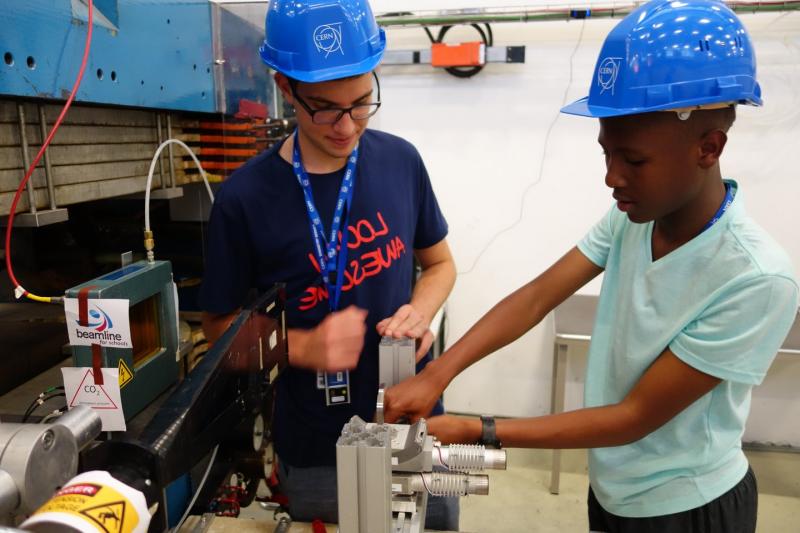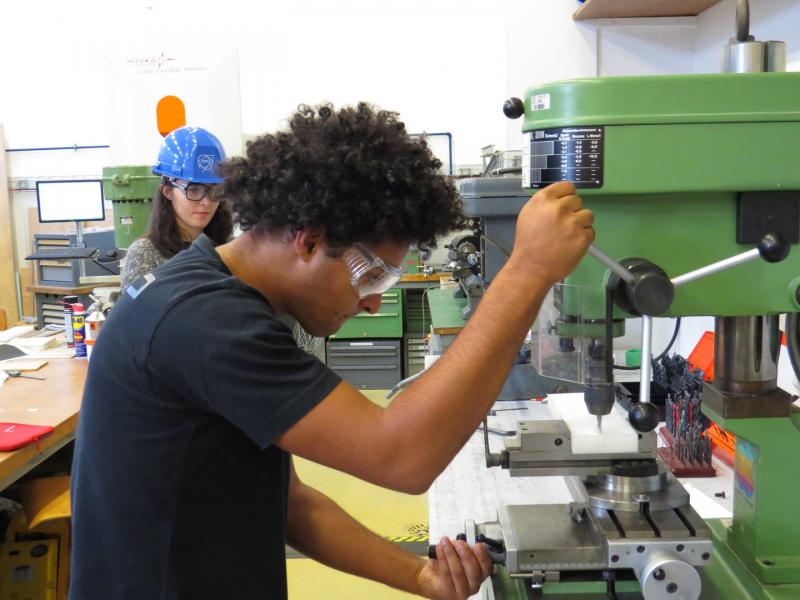From 10–20 September, winners of the Beamline for Schools competition visited CERN to perform their experiments. Two teams of high-school students – “Accelerating Africa” from South Africa and “Leo4G” from Italy – were chosen from a total of 119 teams, adding up to 1050 high-school students.
“When we were told we’d won we never believed it. People’s parents thought we were lying,” says Michael Copeland from Accelerating Africa.

The two teams shared a fully equipped accelerator beamline and conducted their experiment just like other researchers at CERN.

Accelerating Africa is a collaboration of students from St John’s College and Barnado Park High School. Their team’s experiment used a crystalline undulator – including diamonds grown by specialists – to produce high-energy gamma rays. The team hopes that these gamma rays could one day be used to reduce the half-life of nuclear waste and to treat cancer.
“It makes the classroom come alive. When you sit in the classroom reading textbooks the topics are difficult to conceptualise but now we’re living the life of a physicist and doing all of these things that people could only dream of,” says Connor Mercer from Accelerating Africa.

The team Leo4G is made up of a class of 19 students at Liceo Scientifico Leonardo da Vinci school, 10 of whom came to CERN to conduct their experiment. The rest of the students were invited to visit CERN and see the beamline on the last two days of the experiment. Leo4G customised a low-cost web-cam to test whether it could be used as a particle detector.
“The highlight for me was the first time we detected particles. We were so excited, and proud. When the camera was parallel to the beam we saw dots, but we didn’t know for certain they were particles, they could have been noise. But when we turned it perpendicular we saw the tracks,” says Sabrina Giogetti from Leo4G.
On Sunday, the teams returned home, but the projects aren’t finished yet. Both teams are hoping to turn their data into publishable scientific papers. So in between catching up on homework and bringing chocolate to their friends back home, they will be working on the data they took from the experiment.

Read Accelerating Africa and Leo4G’s blogs to find out more.
Beamline for schools is a CERN & Society project, funded in 2015 in part by the Fund Ernest Solvay, managed by the King Baudouin Foundation, and funded in part by the Motorola Solutions Foundation. Find out more about CERN & Society projects and how to get involved here.
